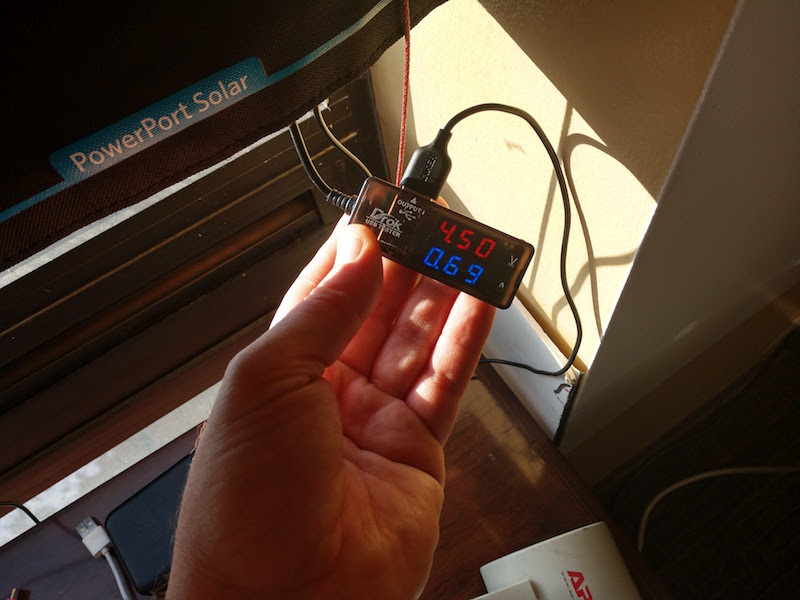Hi everyone,
I finally got a DROK Meter and I kinda went wild with it today. I’ll add a few more metering reviews later, but this one was interesting:
I have an Anker 21w Powerport Solar and an Anker Powercore II 20,000 mAh battery. Plugged into a wall, the Powerport II 20,000 draws about 5V at 2A:
In direct sunlight with ideal positioning, the PowerPort Solar provides charge at about the same rate, even in the winter at a high latitude:
However, even a slight reorientation (I turned about 20 degrees away from the sun - you can see the snow line in the background of both pictures for reference) has a significant impact on performance:
But what surprised me even more was that this was heavily impacted by being behind a window. I took the solar panel inside and had it at the same orientation to the sun as the picture above, and the window had a dramatic effect on the performance, cutting overall wattage by more than half:
Preliminary lesson from my first meter experiment: Always put your panels in direct sun, and remember that the orientation matters, and collection from inside works, but happens at about half the rate as it would in similar conditions outdoors.
Bonus lesson: the 21w Solar panel will almost certainly provide more energy than your device can take under ideal conditions. The powercore II tops out (to the same Amp and volt measurements as a wall plug) before reaching the theoretical capacity of the panel.





 How much was that device and where did you get yours?
How much was that device and where did you get yours? but it is the furthest from being perpendicular, like you said (at least in US).
but it is the furthest from being perpendicular, like you said (at least in US). an upgraded solar panel coming soon
an upgraded solar panel coming soon 

 ).
).




 , also an informative post on metering…
, also an informative post on metering…